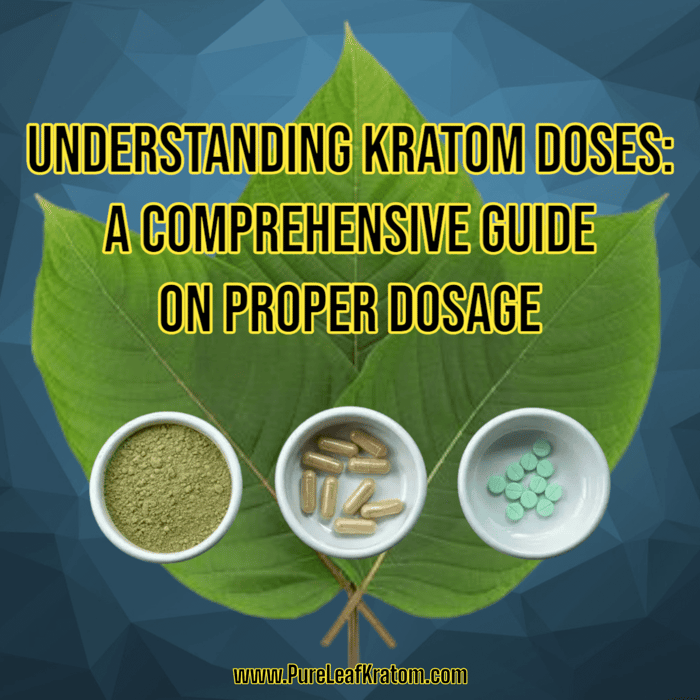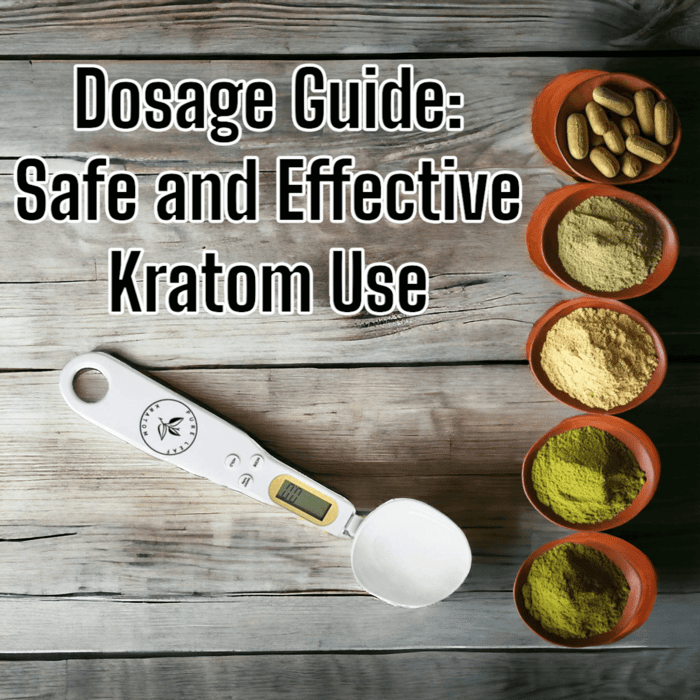
Understanding Kratom Doses: A Comprehensive Guide on Proper Dosage
Mystifying Mitragyna Speciosa: An Introduction to Kratom
Discover the potent Kratom (Mitragyna speciosa) from the Southeast Asian tropics. Rooted in centuries-old traditions, its uses include fatigue combat, productivity enhancement, and alleviation of pain and diarrhea. Explore the nuanced world of Kratom, including traditional kratom doses and consumption methods.
However, the medicinal usage of kratom should not be oversimplified for its benefits. The plant is a unique blend of potent psychoactive compounds – namely, mitragynine and 7-hydroxymitragynine. Each of them plays a significant role in the effects and potential risks associated with Kratom use. Their influence extends from creating a mild stimulant impact to mimicking opiate-like effects, all depending on the kratom doses.
From the East to the West: The Globalization of Kratom
While its roots lie within the Southeast Asian regions, globalization has paved the way for kratom's mass appeal. The rise of alternative medicine and self-treatment trends in Western countries has drawn attention to this psychoactive plant. Its promises of alleviating chronic pain, treating mood disorders, and aiding opioid withdrawal symptoms have lured the public towards it. However, the literary survey also reminds us about the complex side effects related to kratom use, from cardiovascular issues to liver toxicity and CNS disorders.
Moreover, contemporary kratom goes beyond just chewing leaves or drinking tea. It is now being consumed in the form of capsules, mixed with food or beverages, and even as extract powders. With such growth and diversity comes the formidable challenge of dose management. Realizing the requisite for a comprehensive understanding about kratom doses safety, impacts, and variations has never been more crucial for new and experienced kratom users.
A Glimpse into the Diverse Legal Landscape
Despite its popularity, Kratom operates within a clouded legal context. In some countries, it remains vastly unregulated—permitting use, trade, and research without significant restrictions. Yet, in other nations, it faces outright bans due to associated health risks and potential for abuse. The body overseeing drug enforcement in the United States, the DEA, is currently weighing the possibility of classifying it as a controlled substance due to reported cases of addiction and withdrawal. It is important to consider the legal implications and potential risks before embarking on any kratom-based regimen.
Active Compounds of Kratom and Their Effects
Kratom boasts an array of active compounds, but two molecules steal the limelight – mitragynine and 7-hydroxymitragynine. Both are classified as indole alkaloids, substances with complex molecular structures often responsible for the potency of psychoactive and medicinal plants.
Mitragynine
Mitragynine is Kratom's primary indole alkaloid, responsible for the plant's fascinating array of effects. Situated largely in the plant's leaves, mitragynine can constitute up to two-thirds of total alkaloid content, influencing both potency and effectiveness. This compound offers a myriad of potential benefits including pain relief, mood upliftment, and increased focus. However, as dosage escalates, mitragynine's stimulatory effects may transform into sedation, contributing to the complexities of Kratom's effects spectrum.
7-Hydroxymitragynine
7-Hydroxymitragynine may not be as abundant as mitragynine, but its effects are potent. It's best known for its analgesic properties, thus playing a critical role when kratom is used for pain relief. Its sedative effects become more pronounced with increased dosage, adding another layer of paradox to Kratom's influence.
Understanding Variations in Concentration
The concentration of mitragynine and 7-hydroxymitragynine can vary across different Kratom strains, with influence from factors such as plant age, growing conditions, and harvest procedures. This divergence can lead to strain-specific effects, tailoring the Kratom experience for distinct therapeutic needs.
Overall Effects Range and Duration
Together, mitragynine and 7-hydroxymitragynine largely dictate Kratom's morphing effects range. A low to moderate dose may induce stimulation, enhance mood, and improve productivity. Higher kratom doses, however, shift to sedative and analgesic effects, soothing physical discomfort, and promoting relaxation. The duration of these effects generally lingers for 2-5 hours, depending on the kratom doses, metabolism of the user, and other physiological variables.
Kratom has become increasingly popular for its potential therapeutic benefits like pain relief and mood enhancement. However, it is essential to underline the importance of proper dosing, as the impact of Kratom, both positive and negative, can significantly fluctuate based on dosage. Understanding Kratom doses thus becomes especially relevant.
Basic Principles of Kratom Dosing
The pharmacological effects of Kratom are dose-dependent, meaning they significantly change based on the amount ingested. The active compounds in Kratom primarily act as opioid receptor agonists, leading to reduced pain and causing stimulant and sedative effects that vary depending on the dose. Kratom doses between 1-5 grams typically induce stimulant effects, while doses from 5-15 grams elicit sedative effects. However, it's critical to note that with higher doses, the risk for adverse effects like gastrointestinal issues increases substantially.
The Concept of a “Standard Dose”
A "standard dose" of Kratom remains somewhat elusive given that individual experience can vary so widely. Factors such as age, gender, metabolism, body weight, physical health, and tolerance can influence the effects of a given dose of Kratom. The quality and strain of the Kratom used can also significantly impact the perceived effects. Therefore, users are often advised to start with lower doses and gradually increase until beneficial effects are achieved without significant adverse reactions.
Definitions of Kratom Doses
Low Dose
Low Kratom doses typically fall between 1 to 5 grams. Users may feel an increase in energy, alertness, and sociability. It is similar to the effects of consuming caffeine.
Moderate Dose
Moderate kratom doses range from 5 to 15 grams. Users usually experience pain relief, a mild euphoria, and a decrease in anxiety. However, higher doses within this range may begin to inhibit motor and cognitive skills.
High Dose
High kratom doses are anything over 15 grams. It produces substantial sedative effects and may lead to unwanted side effects such as dizziness, nausea, or, in extreme cases, overdoses that can mimic opioid overdoses. It should be approached with caution and under the guidance of healthcare professionals.
Beginner Dose
For those new to Kratom, starting with beginner kratom doses, often less than 1 gram, is recommended. This dosage allows individuals to gauge their body’s response to Kratom before gradually increasing the dose if needed and tolerated.
Factors Influencing Effects and Side Effects
Several factors can influence the effects and side effects of Kratom, including age, gender, metabolism, body weight, physical health, and tolerance. In addition, Kratom's alkaloid concentration also plays a critical role, in that the strain and quality of Kratom used can significantly impact its effects.
Understanding and considering all these factors before deciding the dosage can significantly improve the Kratom experience, striking the right balance between therapeutic benefit and potential adverse side effects.
When delving into the influence of Kratom, or Mitragyna speciosa, it's pertinent to understand that its impact is significantly affected by the quantity consumed. Clarity about the effects and potential side effects at various doses is crucial to enable informed decision-making when using this substance.
Effects and Side Effects at Different Doses
Lower Doses
Administering lower kratom doses, typically ranging from 1-5 grams, is reported to exhibit stimulative effects. Users might experience increased alertness, sociability, and energy. However, individual variability is substantial and some may encounter negative effects such as slight nausea or discomfort. It is always recommended, particularly for first-time users, to start with a minimal dose and gradually increase it if necessary.
Moderate Doses
At moderate kratom doses, between 5-10 grams, Kratom tends to act more as a sedative, potentially providing users with pain relief or easing symptoms of anxiety. However, these quantities come with added risks. Users might experience more pronounced side effects like gastrointestinal issues, dizziness, or excessive sedation.
Higher Doses
Higher kratom doses, over 10 grams, offer pronounced sedative effects and could potentially cause euphoria in users. Yet, significant caution is warranted at these dosages. Users might face severe nausea, sweating, palpitations, or other adverse symptoms. Extended daily use at these doses may lead to addiction, with withdrawal symptoms presenting after 12+ hours of abstinence, including severe somatic signs and anxiety.
Threshold Between Beneficial and Deleterious Effects
Striking the right balance with the right Kratom doses is a delicate science, dependent on various factors from the individual's weight and metabolism to their tolerance and the alkaloid content of their chosen Kratom strain. The threshold between beneficial effects and harmful side effects can blur if the user isn't vigilant and well-informed about their dosage. As kratom doses increase, so does the risk of undesirable outcomes, proving the old adage right that too much of anything is seldom good.
Optimal Dose for Desired Effects: What Research Says
Clinical research on Kratom and its dosage remains limited. Anecdotal data primarily shapes the collective understanding of optimal dosage levels. It is generally advised to start at a low dose and slowly increase the quantity while monitoring how your body responds. In particular, it would be wise to note how different doses affect your cognitive functionality, as studies suggest potential cognitive impairment in acute and chronic use cases.
Exploring the Risks of Kratom Overdose
Taking more than the recommended Kratom dose can yield dangerous consequences, leading to an overdose. As the impact and severity of Kratom vary based on dose, it is vital to understand the symptoms of a potential overdose and the immediate actions to take.
Understanding What Constitutes an Overdose
When it comes to Kratom, an overdose refers to taking an amount excessively above the recommended dose. The safety range ends at around 15 grams, with anything above representing a significant risk. Ingesting high doses (5-15 grams) can already cause side effects like euphoria, reduced pain, dizziness, and sweating. Taking pure alkaloid isolates or extracts and combining Kratom with other substances, such as opioids, greatly escalates the likelihood of an overdose. It's important to remember that the traditional use of Kratom by chewing leaves requires substantial amounts to trigger an overdose. Meanwhile, today's commercial products can potentially carry a high overdose risk with less quantity due to their concentration.
Recognizable Symptoms of Kratom Overdose
An overdose of Kratom can cause various symptoms, including respiratory depression, seizures, and rebound hypoxia within 12-24 hours after ingestion. Other indications can mimic opioid toxicity, such as altered mental status, cyanosis, constricted pupils, and hypoxia. Some rare, but severe symptoms can include pulmonary edema, unmanageable vomiting, and heart failure. Circumstances of restlessness, tremors, and convulsions might be a forewarning of a dangerous overdose.
Immediate Actions to Take in Case of an Overdose
Given the severity of potential Kratom overdose symptoms, immediate action is crucial. The first priority should be to seek medical attention urgently. If possible, it’s beneficial to provide the professionals with precise information about the dose taken, the strain variety, and whether other substances were co-ingested. These details can greatly enhance the effectiveness of the treatment given by healthcare professionals.
The Role of Naloxone in Treating Overdose
In some instances, a medication known as naloxone may be needed to revert a severe Kratom overdose. This is particularly the case when symptoms like respiratory depression, altered mental state, and cyanosis are present. Naloxone is a known antidote for opioid overdose, and given that Kratom carries opioid-like properties, it can sometimes be effective at counteracting an overdose scenario. However, it should be administered by a healthcare professional due to potential side effects and complications that can occur.
Preferred Methods of Kratom Consumption
Exploring the preferred methods of Kratom consumption, there are several ways individuals can intake the substance. Such methods include capsule dosage, mixing it with food, and blending it with drinks. Each variant presents a unique pathway for the body to metabolize Kratom and can influence the onset, duration, and intensity of the effects.
Capsule Dosage
An option that allows for easy measurement and consistency is consuming Kratom via capsules. This method simplifies the process of determining precise gram amounts or teaspoon measurements. They are also beneficial for those disliking the natural taste of Kratom. However, the body may require more time to digest the capsule, slowing the onset of effects.
Mixing with Food
Incorporating Kratom into your regular meals or snacks can be an effective way of consumption. The taste can be masked by strong flavors in the food making it more palatable. However, food in the stomach can delay the absorption of Kratom, possibly resulting in a slower onset of effects.
Mixing with Drinks
Mixing Kratom with drinks like tea or juice can be a practical ingestion method. It enhances palatability and accelerates absorption, leading to a quicker onset of effects. This method may however dilute the overall Kratom concentration and alter the duration of effects.
Comparing Ingestion Methods
The method of consumption influences the onset, duration, and intensity of Kratom's effects. Capsules may prolong the onset due to the extra digestion step, but they offer a consistent, easy-to-control dose. In contrast, mixing Kratom with food or drinks may quicken absorption, but the onset of effects and intensity could be less predictable.
Benefits and Drawbacks of Different Consumption Methods
Each method has its advantages and disadvantages. For a consistent, controlled, optimal dose, the capsule dosage is favorable, bearing in mind the slower onset. If the natural flavor of Kratom is a concern and gradual effect onset is acceptable, mixing with food may be the most suitable method. For a faster onset of effects, along with acceptable alterations in duration and intensity, mixing with drinks could be a positive choice.
It is important to note that personal preferences, along with individual physiological factors like age, gender, body weight, and metabolism, can influence the ideal choice of consumption method. Hence, it is advisable to experiment with different methods while adhering to safe dosing guidelines.
Kratom Varieties and Dosage Guidelines
Understanding the potency and associated effects of the different vein colors in kratom is crucial when deciding which strain to use. The leaves of Kratom have red, white or green veins, each denoting a different alkaloid composition and the expected impact. This difference in composition can significantly change the outcome of using the product.
Understanding Vein Colors and Their Associated Effects
Red vein strains are known for offering relaxation and pain relief. White vein strains provide impressive stimulation and mood enhancement, while green vein strains deliver moderately balanced effects, maintaining a middle ground between stimulation and tranquility.
Most Popular Strain Varieties
Kratom enthusiasts tend to favor certain strains over others, with some of the most popular being Red Bali, a strain renowned for reducing stress and promoting relaxation; White Maeng Da, acclaimed for its energy boost; and Green Malay, offering a unique combination of stimulation and tranquility.
Guidelines for Appropriate Time between Doses
It's also wise to be conscious of the time between doses, as this can significantly influence the effects and potential side effects of kratom. Maintaining ample spacing between dosages avoids excessive concentrations in the body that could trigger undesirable outcomes.
Dosage Recommendations for Specific Strains
The recommended dosage also varies depending on the specific strain of kratom, with some requiring a higher dosage to achieve the desired effect due to varying alkaloid contents.
Safety Precautions When Varying Strains and Dosage
As with any potent substance, it's important to employ safety precautions, especially while experimenting with varying strains and dosages. It's recommended to start with a low dose, slowly increasing, and avoid mixing with other substances. Kratom is best taken after a light meal and it's vital to stay hydrated throughout usage. Tracking effects can help users understand the impact on their bodies and adjust dosage accordingly. Groups such as pregnant women and those recovering from addiction should avoid kratom due to its established side effects, and its potential for creating dependency. Consulting a medical professional is always advisable, especially for individuals taking other medication or experiencing side effects.
Regular use of Kratom can lead to the development of tolerance, dependence, and withdrawal symptoms. Understanding these risks and how to manage them is crucial for anyone considering using this substance.
Tolerance to Kratom
A person can become tolerant to Kratom over time, which means they need escalating amounts to achieve the same effects. With regular usage, the active compounds in Kratom, primarily mitragynine and 7-hydroxymitragynine, can become less effective due to receptor downregulation, a biological adaptation in which your body starts to decrease the number of active receptors available for Kratom's active compounds. This, in turn, may push individuals to consume more to compensate for the reduced effectiveness, which is not advisable due to the associated risks, such as increased side effects, dependence, and potentially, overdose.
Risk of Dependence
Dependence on Kratom is perhaps the most serious potential drawback of regular use. If one consumes Kratom consistently over time, the body may become physically reliant on its presence. Kratom compounds stimulate opioid receptors in the brain, and when this stimulation becomes an expected routine, your body may begin to struggle without it, leading to a dependence. The risk of developing a dependence can be influenced by factors such as dosage, tolerance, frequency of use, individual's overall health, and even psychological factors.
Kratom Withdrawal Symptoms and Management
If a person abruptly stops using Kratom after developing a dependence, withdrawal symptoms may set in. These may include muscle aches, insomnia, irritability, aggression, emotional changes, runny nose, and jerky movements. Withdrawal symptoms can be quite uncomfortable, further underlining the importance of prudent dosage management and responsible use of Kratom.
There are currently no established medications for treating Kratom dependence and withdrawal specifically. However, supportive treatments may include anti-inflammatories, antidiarrheals, antidepressants, anti-anxiety medications, and non-opioid analgesics. More research is needed to find targeted treatments. If you or someone you know is struggling with Kratom dependence or withdrawal symptoms, it's important to seek help from healthcare professionals or helplines such as SAMHSA's National Helpline.
In conclusion, while Kratom may have potential benefits such as pain relief and anxiety relief, the risks of tolerance, dependence, and withdrawal should not be overlooked. Responsible use, which takes into account optimal dose, safe dosing frequency, duration of effects, and individual factors like age, weight, and gender, is key to minimizing these risks and enhancing safety.
Tapering off Usage, Potentiating Effects, and Stacking
When it comes to Kratom use, a strategy for discontinuation is key to balance benefits, avoid withdrawal symptoms, and prevent potential dependence. As well as ways to enhance Kratom's effects for more extended use, it's critical to acknowledge combining Kratom with other substances and the risk it carries.
Tapering off Usage
If you're looking to stop using Kratom, a step-by-step approach can aid the process. Gradual tapering is often recommended to bypass uncomfortable withdrawal symptoms. The rate of this taper should delicately balance withdrawal severity with the likelihood of relapse. Using a scaled-down dosage chart, a common advice is to reduce dosage by 10-25% every 3-7 days. This slow taper, potentially extending over several weeks or months, is generally better received by the body and more successful in achieving long-term Kratom cessation. The goal is sustainable progress without adverse effects. Throughout this process, the SAMHSA National Helpline can provide valuable resources and referrals to treatment facilities and programs.
Potentiating Kratom's Effects
To stretch the possibility of Kratom usage, you might look into enhancing its effects, a practice known as potentiation. There are various natural potentiators like turmeric, grapefruit juice, or cayenne which can enhance Kratom's effects. These may boost the potency per dose, aiding your tapering efforts, as you would need less Kratom to reach desired effects. However, a word of caution: these potentiators can also increase tolerance over time, and care should be taken not to replace one dependence with another.
Combining Kratom with Other Substances (Stacking): Risks and Recommendations
Stacking or combining Kratom with other substances can provide a unique blend of effects, but it's not without its risks. A significant potential disadvantage to stacking is that it can dramatically amplify the effects of Kratom, increasing the likelihood of side effects and overdose. Additionally, the resulting interactions can lead to unforeseen complications. Prudence should be observed while stacking to avoid misuse and unintended health implications. Always notify your healthcare provider if you're considering stacking Kratom with other substances.




